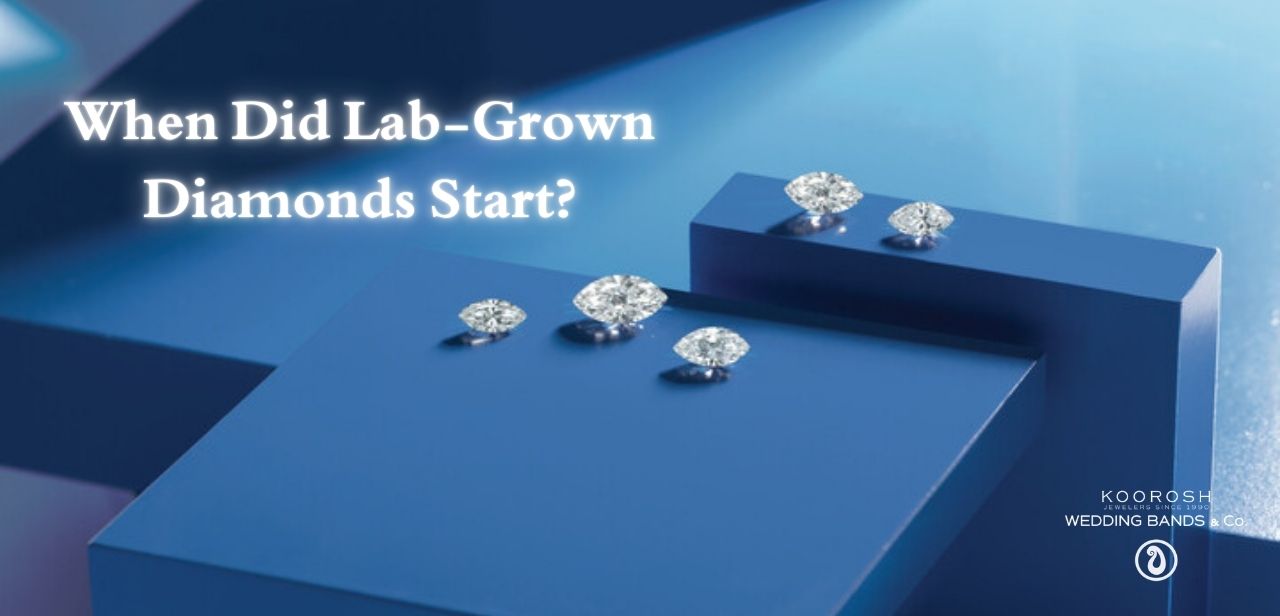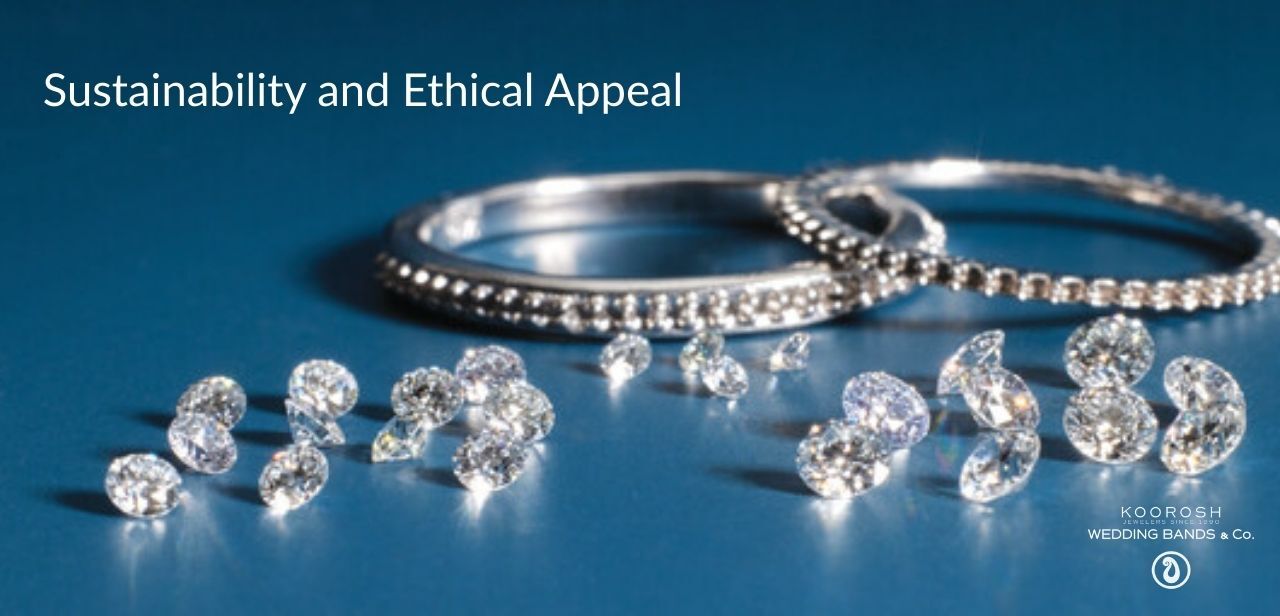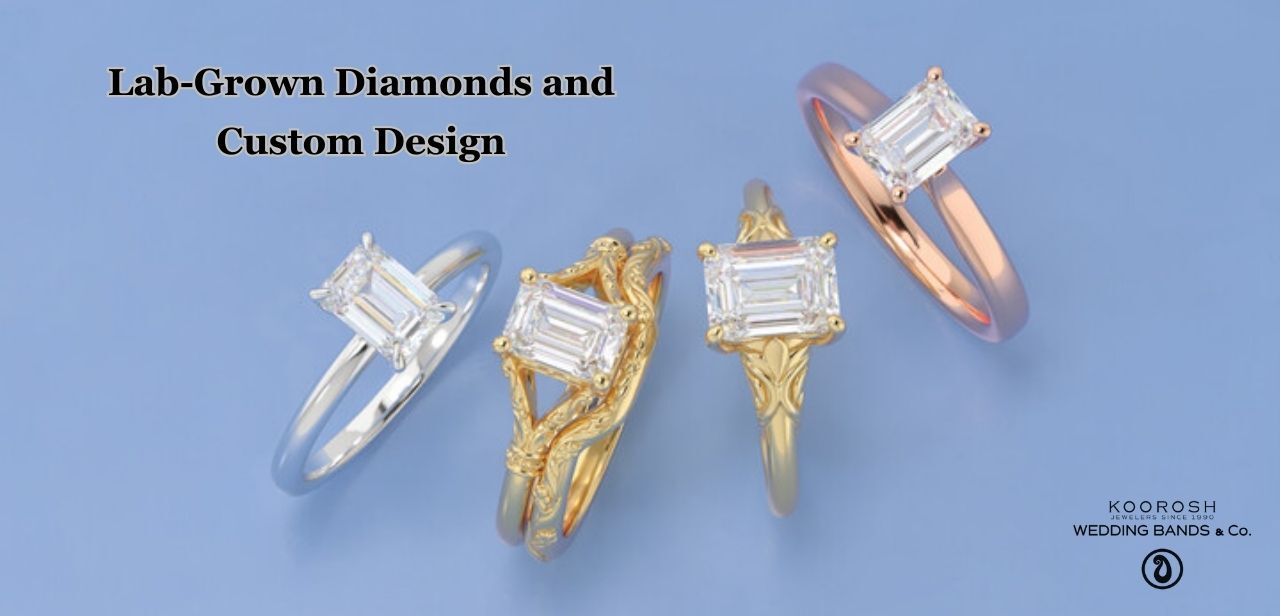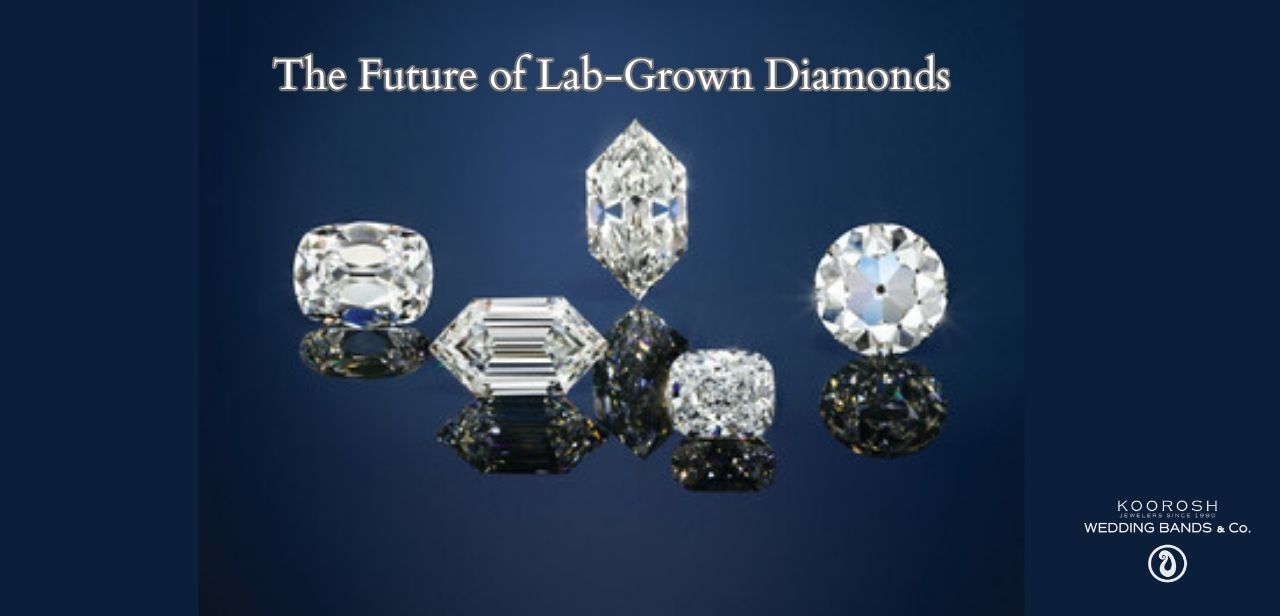When Did Lab-Grown Diamonds Start?
Posted by Koorosh Daneshgar on Jan 14th 2023

Modern lab-grown diamonds enter the historical record as a new chapter in ring anatomy.
Each ring holds two fundamental narratives: love and the process of transformation. Understanding what makes a ring special requires knowledge about the ring's anatomy which includes its setting, band and metal and most crucially the gemstone.
Numerous Chicagoans who want to build their custom engagement rings and wedding bands are now choosing gemstones that surpass traditional diamonds. Lab-grown diamonds represent a contemporary and sustainable gemstone alternative that brings exceptional beauty to the market. What led to the widespread adoption of lab-grown diamonds in ring anatomy? Let’s explore their journey.
A Glimpse into History: The First Spark
Scientists at General Electric achieved their first man-made diamond success during the 1950s. Industrial applications took priority at that time because these diamonds served as cutting tools for grinding and polishing machinery that benefited from diamond's unmatched durability.
The breakthrough of this technology in the diamond field opened doors to additional advancements in diamond science even though the produced stones were not suitable for jewelry use. The first stage in modern ring development serves as the foundational element which remains invisible to the eye but holds substantial importance.
The 1980s: The First Jewelry-Grade Lab Diamonds Appear
The 1980s marked the transition of laboratory-created diamonds from industrial materials to suitable gemstones for high-end jewelry. They introduced new design potential into the world of rings although they remained smaller and less polished at first. The High-Temperature High-Pressure (HTHP) method produced these diamonds through processes which duplicated Earth's natural diamond formation.
The decade established the fundamental base that future technological advances in lab diamond production could build upon similar to how the ring shank supports the rest of the structure.

The 1990s brought an innovation breakthrough with CVD technology
The scientific community developed Chemical Vapor Deposition (CVD) as their new standard method in the 1990s. Scientists developed this method to create diamonds by building them from carbon vapor which accumulated on a substrate within a controlled chamber.
Couples selecting their ideal Chicago engagement ring should understand this information because CVD technology enabled the production of larger high-quality lab-grown diamonds. CVD technology enabled scientists to gain better control over inclusions and clarity as well as color because these elements determine how a center stone matches with the setting and metal of a ring.

The 2000s: Custom Rings Get a Modern Touch
The beginning of the new millennium brought rapid technological progress. The combination of visual perfection with eco-friendly and ethical advantages made lab-grown diamonds increasingly popular. A rising number of Chicagoans together with couples worldwide decided to purchase lab-grown diamond engagement rings that combined high quality with budget-friendly prices.
At Wedding Band and Co., our Chicago store experienced an increasing number of customers who wanted to integrate these stones into their dream wedding bands. Lab-grown diamonds allowed couples to select from various settings including solitaire, halo and multi-stone configurations thus providing both versatility and stunning looks for any design choice.

Sustainability and Ethical Appeal
A ring's diamond receives all the attention yet contemporary partners evaluate the environmental impact behind the gemstone's sparkle. The story behind lab-grown diamonds possesses integrity because the inner setting provides support to the diamond while keeping it secure.
Wedding Band and Co. maintains complete openness regarding all our operations. Our laboratory-created diamonds originate from facilities that generate power through renewable energy sources and operate with environmental safeguards in place. Our clients who select lab-grown stones can make sustainable choices which match their personal values.
Among our most frequently searched local keywords stands the term "ethical engagement rings in Chicago."

Lab-Grown Diamonds and Custom Design: A Perfect Match
Creating a ring from scratch begins with the stone selection because it determines the subsequent design elements including band width and setting height as well as the metal type and decision about adding accent stones. The manufacturing capabilities of lab-grown diamonds in various dimensions and colours and forms make them suitable for people who seek complete customization.
Lab-grown diamonds are available in radiant cuts with rose gold settings as well as princess cuts with platinum settings which gives you unlimited design possibilities based on your imagination.
Wedding Band and Co.'s founder and master jeweler Koroosh Daneshgar stresses that every ring's anatomical design stems from your personal narrative. Lab-grown diamonds enable you to share your story through an ethical and budget-friendly purchasing experience.
Local Expertise Makes the Difference
Those interested in lab-grown diamonds in Chicago need to work with a jeweler who knows both the science and artistic aspects of custom design. During your design consultation at Wedding Band and Co. we will guide you to choose your ideal lab-grown diamond by examining all parts of your ring including the band, setting, stone and accents based on your budget and design preferences.
Our local presence also ensures that your experience is personal and efficient. We serve to assist you in creating an original piece whether you begin your search or plan to enhance your current ring.
The process of selecting between lab-grown diamonds and natural diamonds
People commonly wonder about the differences between lab-grown diamonds and natural diamonds. The decision depends on individual tastes along with individual priorities. Lab-grown diamonds share identical chemical and physical properties with natural diamonds yet they provide both lower prices and unambiguous ethical clarity.
The meaning of your diamond's origin stands equally with its brilliance when you design a ring with purpose from prongs to hidden band engravings.

The Future of Lab-Grown Diamonds in Ring Design
Technology advances will lead to rising innovation in lab-grown diamond production. Lab-grown diamonds now offer greater precision and more colour options while requiring less environmental impact which makes them the preferred choice above traditional diamonds for engagement rings and wedding bands.
Wedding Band and Co. observe how Chicago couples combine timeless traditions with contemporary values in their wedding jewellery choices. The lab-grown diamond options in vintage settings and stackable wedding bands with lab diamond accents open up limitless design opportunities for customers.

Final Thoughts: Your Ring, Your Way
A ring consists of more than aesthetics since it must also function well while representing personal meaning. Selecting lab-grown diamonds allows you to develop a unique piece that embodies your personal narrative and values and future aspirations.
Are you interested in custom engagement rings made from lab-grown diamonds in Chicago? The team at Wedding Band and Co. led by Koroosh Daneshgar invites you to book a complimentary consultation to turn your dream into reality.
Contact Us
Wedding Bands Company
Location: 43 E Oak St., FL 2, Chicago, IL 60611
Phone: +13129200726
Email: info@weddingbandscompany.com
Store Hours:
Monday - Friday: 10:00 AM - 6:00 PM
Saturday: 10:00 AM - 5:00 PM
Sunday: Closed

By: Koorosh Daneshgar CEO/Design Chief
We'll help you to design your dream engagement ring without stress and spending countless hours searching for your perfect ring. All you need to do is click on "Free Consultation" to get started.

